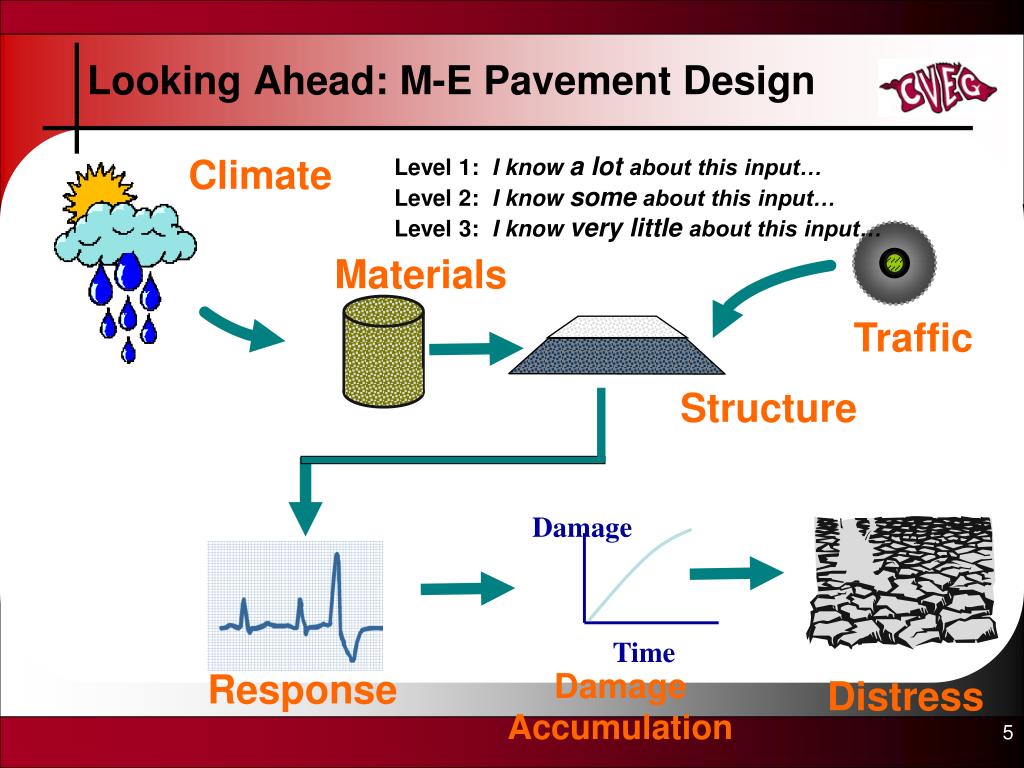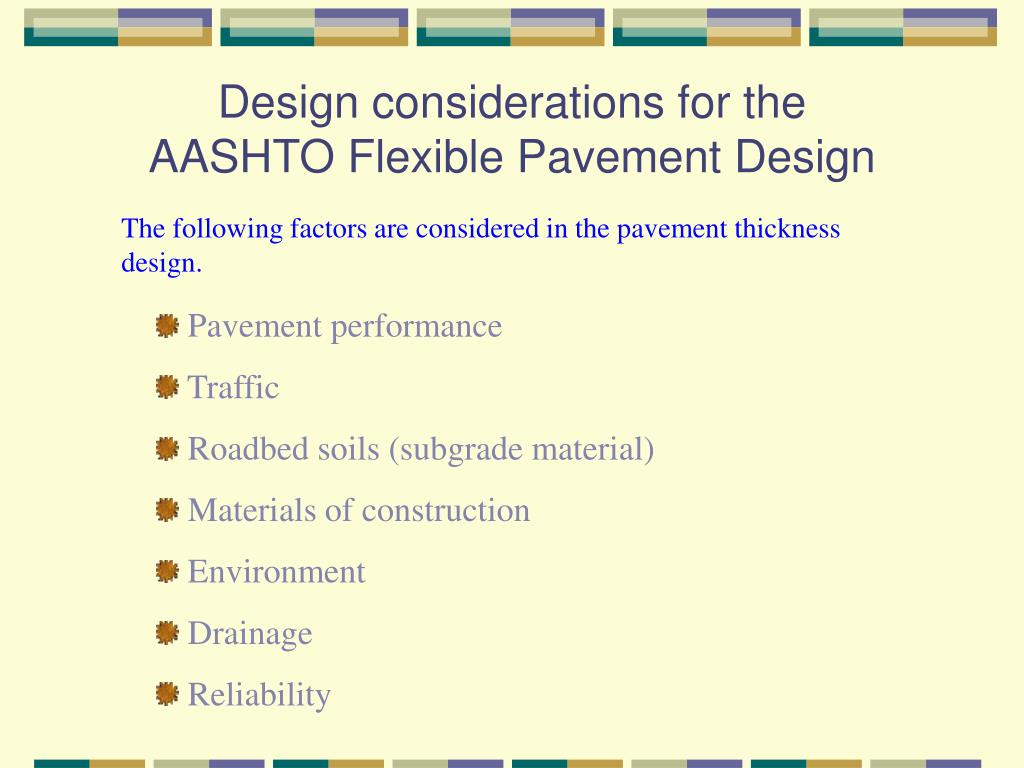

The maximum horizontal stress also occurs directly under the wheel load but can be either tensile or compressive. Stresses decrease with increase in depth from the surface. The maximum vertical stresses are compressive and occur directly under the wheel load. Principles of Flexible Pavement Design Cont. The application of the wheel load causes a stress distribution (See Figure 20.2). Other layers are finite the vertical direction and infinite in the horizontal direction. It assumes that subgrade is infinite in both the vertical and horizontal directions. Materials in each layers is characterized by certain physical properties (Mr, E,….). Pavement structure is considered as a multilayered elastic system. Principles of Flexible Pavement Design

Typical Cross Section for Conventional Flexible Pavement It is assumed to posses considerable flexural strength that will permit it to act as a beam and allow it to bridge minor irregularities in base and subgrade. Rigid pavement: Pavement constructed of Portland cement concrete.

A structure that maintains intimate contact with subgrade and distribute loads to it, and depends on aggregate interlock, particle friction, and cohesion for stability. Pavement Types Flexible Pavement: Pavement constructed of bituminous & granular materials. Chapter 16: Highway Engineering, by Paul Wright & Karen Dixon, 7th Edition, Wiley & sons Instructor: An example to illustrate how climatic considerations can be incorporated into the AASHTO design is presented.Flexible Pavement Thickness Design / Asphalt Institute Method Source: Chapter 20: Traffic & Highway Engineering by Nicholas Garber and Lester Hoel, Third Edition, Brooks/Cole.

By knowing the asphalt grade and the mix properties, the weighted, effective asphalt‐layer coefficient is calculated. A rational method is proposed to select the appropriate asphalt grade to minimize both low‐temperature cracking and rut depth. The impact of the ambient temperature on the asphalt‐concrete layer is evaluated by considering the interactive result of temperature and fatigue damage the concept of weighted effective dynamic modulus is thus used. Through a sensitivity analysis of the new AASHTO equation, the change in the structural number required to offset a reduction in the subgrade resilient modulus due to an increase in moisture content is evaluated an adjusted structural number is thus calculated. Climatic factors considered include seasonal changes in the subgrade moisture content and the annual variations in the ambient temperature. This research is undertaken to study and assess carefully the effect of climatic factors on the new American Association of State Highway and Transportation Officials (AASHTO) design for flexible pavements.


 0 kommentar(er)
0 kommentar(er)
